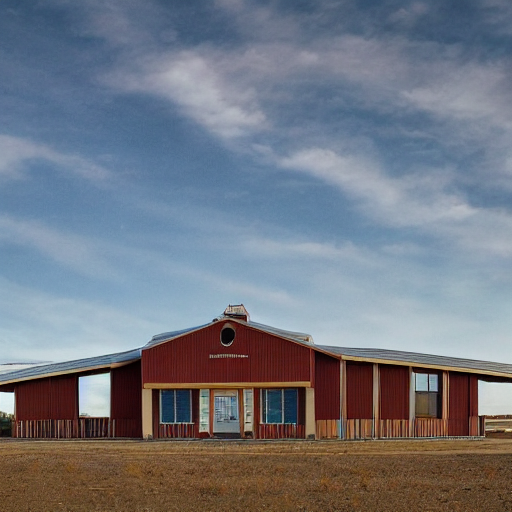"Rural Texas Families Left Stunned and Disappointed By Growing Disconnect in Public Education System!"
Published: 12-12-2022 08:07
Introduction
In recent years, the values and priorities of America’s public education system have grown increasingly disconnected from the needs of families living in rural areas. Texas is a particularly good example of this disconnect, with a large number of rural communities that have been left behind by state policies and funding decisions that favor urban schools. This tutorial will discuss the particular challenges faced by rural schools in Texas and offer some suggestions for how to bridge this growing divide between public education systems and the families they are supposed to serve.
Background
Rural schools in Texas face unique challenges due to their geographic isolation. Many communities lack access to adequate transportation networks or technology infrastructure, making it difficult for students to get to school or take advantage of online learning opportunities. Additionally, school districts often lack the resources needed to provide an equitable education experience across all grade levels, leading to disparities in educational outcomes. Furthermore, many rural areas are experiencing population declines as residents move away in search of better economic opportunities, leading to fewer resources and funding for local schools.
Challenges Faced By Rural Schools
The challenges faced by rural schools can be broken down into four main areas: access to resources, lack of technological infrastructure, inadequate funding, and declining enrollment numbers.
Access To Resources: Rural schools often lack access to basic resources such as textbooks, computers and other technology tools that are essential for providing quality instruction. Additionally, many rural schools do not have enough qualified teachers or staff members who can provide specialized instruction in certain subject areas such as science or math. Finally, there are limited extracurricular activities offered at these schools due to a lack of funding and personnel available to coordinate them.
Lack Of Technological Infrastructure: Rural Texas is known for its digital divide—the gap between those with access to technology and those without—which has made it difficult for students from these communities to keep up with their peers living outside these areas. Without reliable internet service or access to devices like laptops or tablets, students may struggle with assignments that require online research or collaboration with classmates living elsewhere in the state or country.
Inadequate Funding: Funding disparities between urban and rural school districts have long been an issue in Texas; however, recent budget cuts have only exacerbated this problem further. These cuts have led many small districts struggling financially as they try desperately just make ends meet while still trying provide quality instruction for their students.
Declining Enrollment Numbers: Declining enrollment rates compound the already existing problems facing rural schools since fewer students means fewer resources available per student which leads inevitably lower academic achievement overall within districts suffering from declining enrollment numbers over time.. The causes of this decline are numerous but include factors such as poverty levels , job losses , migration patterns ,and aging populations . All these issues combine together lead even further strain on already stretched budgets .
Suggestions For Bridging The Divide Between Public Education And Families It Serves
1) Increase Access To Resources: One way that states can help bridge the divide between public education systems and families is by increasing access to resources for students living in remote areas. This could include providing textbooks at no cost as well as expanding online learning opportunities through distance learning programs or virtual classrooms that allow students from different locations around the state (or even around the world) collaborate on projects together . Additionally , providing devices like laptops would help ensure that all students regardless of their location have equal access educational advantages .
2) Improve Technology Infrastructure: Investing in improvements technology infrastructure throughout rural communities would go a long way towards bridging this divide . This could include investing more money into broadband services so everyone has reliable internet connection which can then be used for both work-related tasks (such as completing assignments )as well leisure activities like streaming movies etc . Additionally , local organizations could also partner with tech companies donate used equipment (like computers )to these underserved communities so they too can benefit from advances modern technology . 3) Increase Funding: States should strive increase funding for public education systems so they can adequately support all their students regardless where live . This could include implementing more equitable funding formulas based on district size/population instead relying solely on property taxes pay for educational costs . In addition , investing more money into teacher training programs could help attract highly skilled professionals outlying regions need affordably close gaps when it comes filling positions vacant due educators leaving retirement / relocating another area etc 4) Reduce Administrative Costs : Another way states help bridge divide between public education systems families they serve is reducing administrative costs especially those related bureaucracy paperwork associated hiring/managing staff members etc By streamlining processes , school districts free up funds necessary improve educational outcomes across board while still remaining within budget parameters Conclusion America’s public education system supposed serve needs families regardless where live Unfortunately , growing disconnect between values priorities these two entities evident especially when looking specifically at what happening rural parts country like Texas However , taking steps increase access resources improving technological infrastructure increasing funding reducing administrative costs just few ways states bridge divide ensure everyone receives quality education deserve














